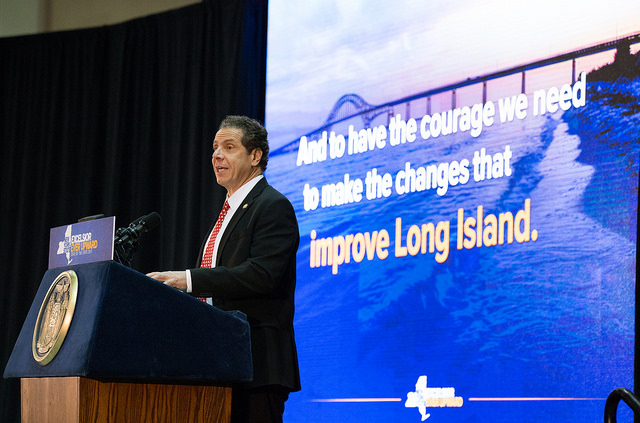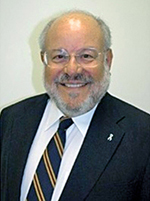Column: Free tuition—an old idea for a new age


New York Governor Andrew Cuomo’s proposal last week for free tuition at SUNY and CUNY schools has roots going back nearly two centuries in this region, to 1847 and the founding of the Free Academy of the City of New York, which became City College.
It was later dubbed “the poor man’s Harvard.”
It was a highly attractive centerpiece of the presidential campaign last year of U.S. Senator Bernard Sanders (I-Vermont) who was with Mr. Cuomo when he announced his plan.
And it’s as important and as relevant in Kalamazoo as it is on Long Island. Indeed, The New York Times Magazine ran an extensive article in September on the success of a program that began in 2005 in that Michigan city where unnamed donors pay tuition to Michigan’s public schools of higher education “for every student who graduated from the [Kalamazoo] district’s high schools. All of a sudden, students who had little hope of higher education saw college in their future. Called the Kalamazoo Promise, the program … would be the most inclusive, most generous scholarship program in America.”
The vision is brilliant. And it’s so integral to the ideal that public education should be widely provided, and not be an exclusive benefit for a privileged few.
I’ve been so fortunate for many decades to be a professor at one of the four-year public colleges on Long Island, SUNY/College at Old Westbury, and I’ve also taught as a part-time adjunct at two-year Suffolk County Community College. I’ve seen first-hand, again and again, students gaining from the life-changing opportunities that education provides. And it’s not just the students who benefit. We all gain.
Last year, SUNY/Old Westbury celebrated its 50th anniversary at an event at which 50 graduates were honored — women and men deeply involved in enhancing this region, this state and this nation. Many had the title “doctor” in front of their names, prominent figures in fields from science to music to business to government to education to media to health and on and on.
Students who are first-in-their-families to go to college are highly represented at both Old Westbury and Suffolk Community.
It’s difficult going to graduation at SUNY/Old Westbury and holding back tears when one sees some students and learn their stories. Last year, for example, a woman, a refugee from war-torn Aleppo in Syria who studied journalism with me went onto the dais at a commencement that truly commences the entry of such individuals as valuable citizens of our society.
The Free Academy of long ago was founded, notes the CUNY website, “to provide children of immigrants and the poor access to free higher education based on academic merit alone.” Its first president, Dr. Horace Webster, described it as “the experiment” as to “whether the children of the people, the children of the whole people, can be educated; and whether an institution of the highest grade, can be successfully controlled by the popular will, not by the privileged few.”
“City College,” it continues, “thus became one of the nation’s great democratic experiments, and it remains today one of its great democratic achievements. Even in its early years, the Free Academy showed tolerance for diversity, especially in comparison to the private universities in New York City.” It tells of many graduates winning Nobel Prizes and, “Like City students today, they were the children of immigrants and the working class, and often the first of their families to go to College.”
In announcing his plan last week to cover the tuition of students accepted at a state or city college or university — provided their families earn no more than $125,000 a year — Governor Cuomo said: “This is a message that is going to provide hope and optimism for working-class families all across the state.” He continued: “This society should say, ‘We’re going to college because you need college to be successful.’”
Senator Sanders added: “Today what Governor Cuomo is proposing is a revolutionary idea for higher education. And it’s an idea that is going to reverberate not only throughout the state of New York but throughout this country.”
When I graduated from high school in 1959, my local public college, Queens College, was free. But now, like the rest of CUNY and SUNY, there’s tuition, which has risen and risen through the years. The budgets of CUNY and SUNY have been shifting, but tuition has increasingly gone up and government support has decreased. For SUNY’s four-year schools, tuition has gone up every year for the past five years. Many of my students work not one but two and some even three jobs to get through school.
The Cuomo plan will need the support of the New York State Legislature to become reality, as it should.
State Senator Ken LaValle (R-Port Jefferson), long-time chairman of the Senate Higher Education Committee and whose district includes Shelter Island, commented that he and his colleagues will “thoroughly” consider it “to ensure this measure truly helps to offset the extraordinary debt brought on by undergraduate college costs for middle-class families in New York.”
Top courtesy photo: Gov. Andrew Cuomo during his 2017 State of the State speech.
 Karl Grossman is a veteran journalist and professor and a member of the Press Club of Long Island’s Journalism Hall of Fame. His Suffolk Closeup column is syndicated in newspapers across the county.
Karl Grossman is a veteran journalist and professor and a member of the Press Club of Long Island’s Journalism Hall of Fame. His Suffolk Closeup column is syndicated in newspapers across the county.








